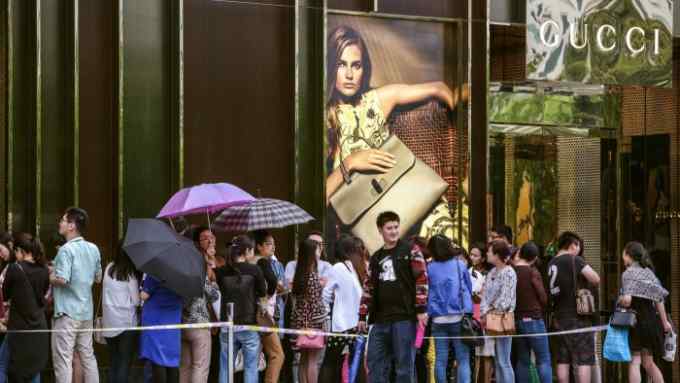China: being a toy making powerhouse is no longer child’s play

Simply sign up to the US trade myFT Digest -- delivered directly to your inbox.
It is not a good time to be making toys in China. Before President Trump ignited talk of a US-China trade war, the world’s biggest toy-exporting nation already faced thin profit margins, accelerated product cycles and rising wages. And that was before Chinese factories were hit by the bankruptcy of American retailer Toys ‘R’ Us last year.
“There’s a great deal of apprehension,” says Robert Dorfman, chairman of Herald Holdings, a Hong Kong-listed group that exports toys, watches and household goods from China to the US. “Most of us are more worried than we’ve been in several decades.”
Despite the pressures, manufacturers like Mr Dorfman argue that China, the source of 82 per cent of US toy imports last year, and the US, the world’s biggest toy market, depend on each other.
“We can’t get away from China as a production base and the US as the main market,” says Dominic Tam, chief executive of Combine Will, another Hong Kong-listed manufacturer, and president of the Toy Manufacturers Association of Hong Kong.
With the US exporting less than $200m of such goods to China, toys were about 7 per cent of the $375bn trade deficit between the two countries last year.
The Trump administration has been wary of taking action against Chinese-made household goods, for fear in an election year of driving up prices paid by US consumers. The US last year imported more than $25bn of toys, games and sports equipment from China.
But the Toy Association, a US industry lobby group, has warned that “there will be no winners if we and the toy community are thrust into a trade war”.
“Officials need to understand the threat to business and American jobs, while consumers need to understand that tariffs will hit them in their pocketbooks across a range of everyday household products,” said Steve Pasierb, president of the Toy Association.
Mr Dorfman, whose company produces G.I. Joe, Batman and Star Wars action figures in Dongguan, in the manufacturing heartland of Guangdong province, says tariffs would not “bring jobs back” to the US because most toy production is too labour-intensive to be profitable in the US.
Emily Cheung, who runs Tsuen Lee, another Hong Kong-based toy maker with factories in China, says the US does not have the skills or the supply chain to make toys. Automation is not practical because of the complicated assembly required for many toys, especially since a growing number contain electronic components.
While China is still much cheaper than the US, wages in Guangdong have risen rapidly over the past decade and, as the ageing Chinese workforce starts to shrink, some factories are struggling to find enough workers — at least without breaking the bank.
Unable to automate further, Chinese factory owners have been exposed to rapidly rising wages, as the economy grows and the workforce starts to shrink.
As a result, a growing number of Chinese manufacturers have been opening facilities to make simple toys and products in Vietnam and other countries with cheaper labour including Bangladesh, Cambodia and Indonesia.
Alberto Vettoretti, managing partner of Dezan Shira, which advises foreign investors in China and south-east Asia, expects this trend to accelerate as factory owners — and the international brands that buy their goods — hedge against the risks of a trade war.
Mr Tam says that while manufacturers worry about rising costs in China — and minimum wages in India or Indonesia can be half of what they are in Guangdong — no other country has the same depth of supporting industries, from electronic components to mould-making machines.
“China is so convenient,” he says. “Not many existing toy manufacturers are willing to go overseas [outside China] because it’s a very big investment, with a lot of uncertainty, and requires a lot of funding.”

Comments